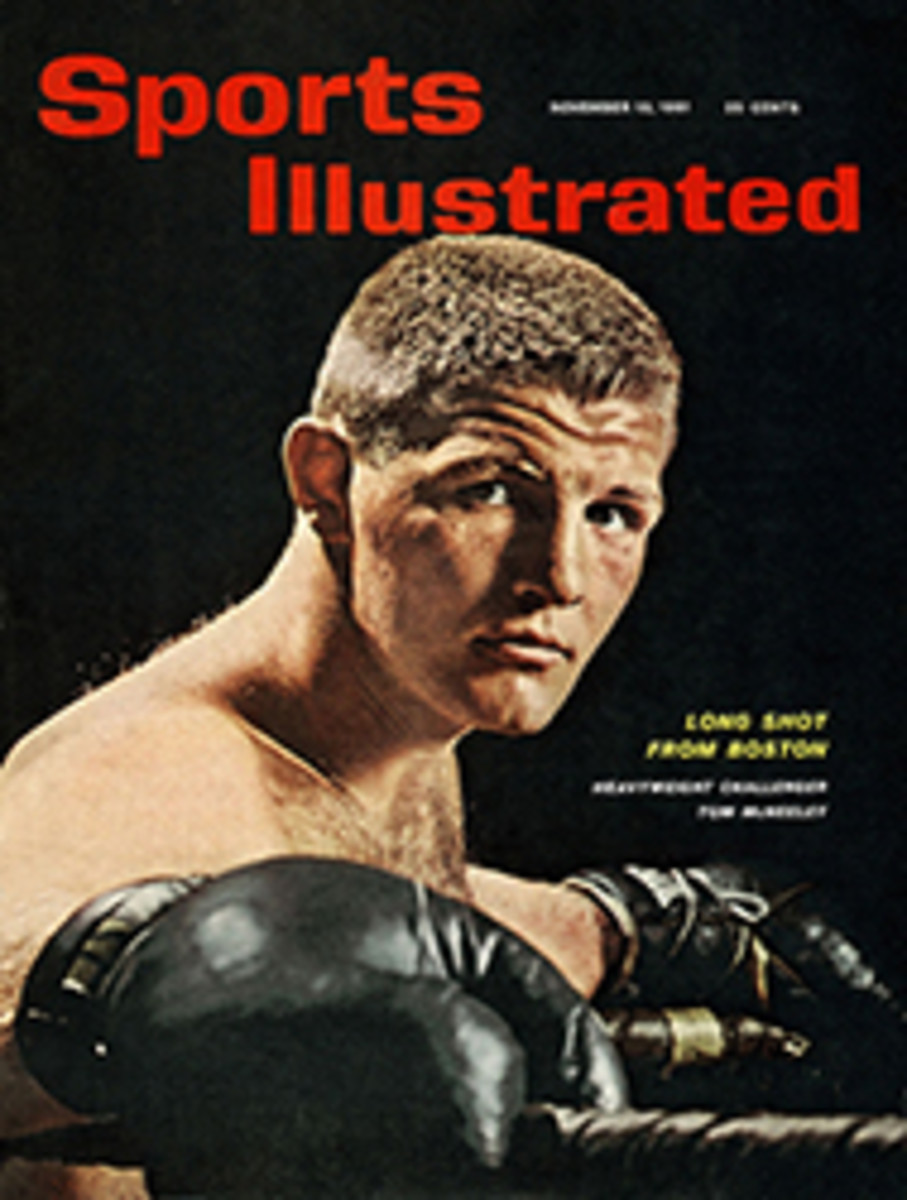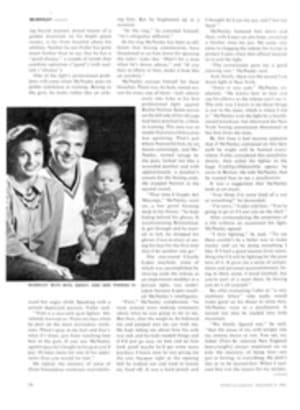
THE APATHY IN SMOGSVILLE
Two decades ago Los Angeles was a pleasant if uninspiring city simmering in the sun. It had fine weather, entertaining sights to see and amusing things to do—one could watch the girls parade through Beverly Hills, soak up the high life on the Sunset Strip, play draw poker in Gardena and generally lead the life of leisure, western style. Yet Los Angeles, for all its growth and ambition, was still minor league as a spectator sports town. Aside from the Coliseum Relays and horse racing, the only big-time events were a handful of football games played by USC.
All this began to change—or so it seemed—in 1946 when the pro football Rams came. A decade later they were followed by the Dodgers, and then the Lakers, the Chargers, the Angels, the Jets and the Toros. All were major league in name if not in fact, and they arrived in rapid succession to tap this rich vein of spectator gold. L.A. sports fans, after years of privation, were overjoyed. They came up from their beaches and down from their fairways to see what Mammon had wrought. In a burst of local pride they proclaimed Los Angeles "the Sports Capital of the World."
By last week, however, it was evident that Los Angeles and sport are not divinely joined. An overload of teams and a paucity of victories have combined to disenchant many a true believer. College football attendance is off so sharply that UCLA is considering a cutback in smaller, nonrevenue sports. The average crowd for Ram games is 15,000 below last year. Dodger attendance last season dropped almost half a million, while the new Angels drew barely 600,000, below the figures of the new Washington club.
More disconcerting is the decline in the quality of the product, which has ranged from disappointing to inferior. The Dodgers, solid favorites for the National League pennant, crumpled under the September pressure and finished second. The Rams, onetime powers of the National Football League, have lost six of eight games, and their owners have been squabbling in public. The two college teams, at their lowest ebb in years, have been beaten by every good opponent they have met and have great trouble defeating even the poor ones. The Blades, L.A.'s new entry in the Western Hockey League, lost nine of their first 12 games, prompting one displaced Easterner to remark: "They'd have a rough time against Andover."
There are several plausible explanations for the Los Angeles slump. All the old attractions—beach, girls, nightclubs—still claim their devotees. The Dodgers, Rams and UCLA Bruins are coming off losing seasons and, according to their harassed publicity men, this year's gate receipts reflect last year's-won-lost record. Do-it-yourself sports are more popular than ever. In the city of Los Angeles, municipal golf courses handled almost a million players last year. The city's 213 tennis courts are crowded all weekend long; on many of them play continues under lights. An estimated 600,000 people bowl in the L.A. area, and another few hundred thousand berth powerboats and sailboats along the coast and inland waterways. The ocean and lakes offer fish you haven't even heard of, and deer, partridge, dove and other game beg to be shot in nearby forests and hunting preserves. Adequate skiing is an hour and a half away, at Mount Baldy, and excellent skiing is six hours away, at Mammoth Mountain. In a sense, it's a wonder anybody pays to watch anybody else play anything.
But they paid, and handsomely, in the past. The real problem now is too many teams offering too little performance. In 1961 the L.A. sports enthusiast knows a poor product when he sees one, and he is not about to support a local team simply because it is local.
The Dodgers, to be sure, were not a poor team, at least not for most of the season. But second place represents failure when you're supposed to finish first. The Rams present a more complex case. Despite two dismal seasons, their hopes this year were for a .500 record or better. Things went badly from the start. Players were fined hundreds of dollars for reporting late to camp; veteran Gene Brito retired; Ollie Matson, whose acquisition in 1959 cost nine players, proved hardly worth that cost. Worst of all were the trades. The Bill Wade-for-Zeke Bratkowski maneuver wound up with Wade contributing more to the Bear offense than Bratkowski has to the Rams'. All-Pro End Del Shofner, sent to the Giants for Minnesota's first draft choice, quickly became one of the league's leading pass receivers.
Meanwhile, the five Ram owners continued to wage their private war in the open. Dan Reeves, who brought the club west from Cleveland, has been struggling to keep control. Under a curious agreement, Reeves, who is approximately a one-third owner, and the bloc of four (Ed Pauley, Fred Levy, Hal Seley and Bob Hope) were given equal voting rights, with the commissioner empowered to break a tie. The agreement lapses December 31, and the two parties see no prospect of further accord.
College football has suffered most. Games that once drew 60,000 are lucky to draw half that number. Last season USC's average attendance fell to 36,574. UCLA's was a few thousand lower, and insiders on the Westwood campus say the school athletic program, supposedly self-sustaining, lost $130,000. As a result, one-third of the 1961 budget for student activities was diverted to athletics. This year they may have to throw in the chancellor's salary, too.
A ho-hum student attitude is partly responsible for the schools' troubles. Apparently the boys and girls have discovered other ways to spend Saturday afternoon. Those who do show up cluster protectively around the 50-yard line. Not enough USC students came to the Illinois game to fill the card-stunt section and, for the first time in memory, the show had to be canceled.
Foolish television agreements are also a problem. When USC gave top-ranked Iowa a fine game, only 30,000 were there to watch. Hundreds of thousands of others picked up the national telecast, which had not been blacked out in Los Angeles. When UCLA played Pitt in the Coliseum, TV beamed USC-California back into the area as competition. Also, thanks to lifetime advance scheduling (sign now, suffer later), the quality of visiting teams has been abnormally poor.
Smog is settling over other sports, too. After years of fealty to state colleges, southern California's high school track stars are drifting off in every direction. Perry Jones and his tennis patrons are producing more good players but fewer great ones, and our world stature is suffering accordingly. Professional boxing is scratching around for a Mexican attraction to take up where José Becerra and Battling Torres left off. The Toros, of the new American Bowling League, have been counting spare pins and brooms to get their attendance figures out of the 300 to 400 range. Only horse racing and basketball are thriving, and the latter's success may be brief. The Lakers have not drawn well in spite of a fast start, and the Jets' opener, coupled with a Harlem Globetrotter show, had the smallest crowd ever to see the Trotters at the sports arena.
Moral: There are evidently not enough fools willing to rush in where Angelenos fear to tread.
ILLUSTRATION
MARC SIMONT

